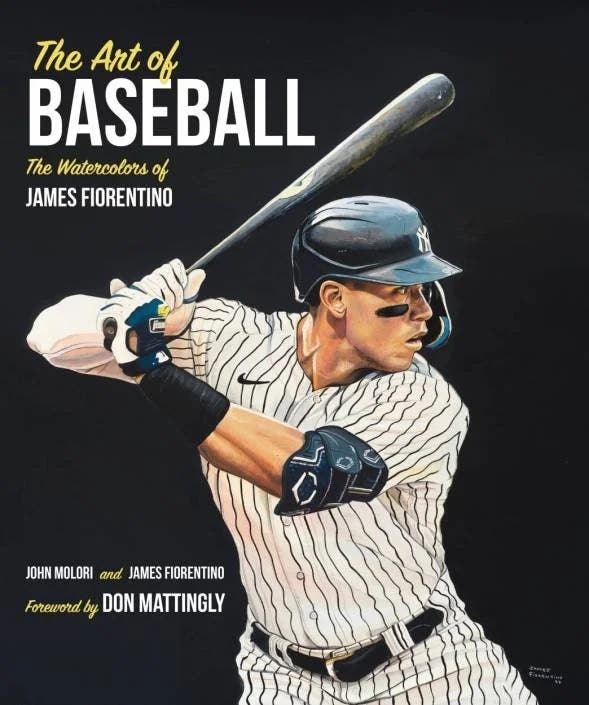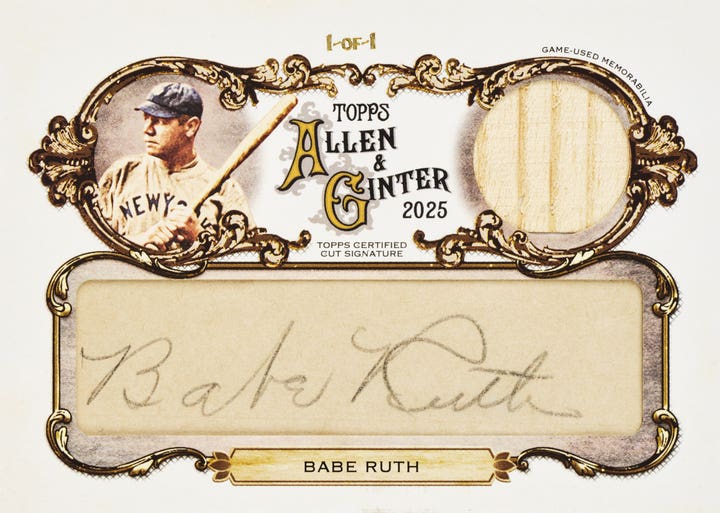
News
Personal scrapbooks offer unique view of sports history, special memories for collectors
EDITOR'S NOTE: This article was originally published in the Feb. 1, 2024 issue of Sports Collectors Digest.
I love scrapbooking. Especially when other people do all the work.
Sure, I kept a scrapbook for a while. Apparently from June 23, 1988 until July 2, 1988; May 20, 1989 until May 24, 1989; August 13, 1989; and Sept. 4 of that same year.
My boyhood baseball scrapbook consisted largely of American League standings, clipped from the Burlington (Vt.) Free Press before my father got a look at the adjoining classifieds section. The standings were always longer than the scrapbook pages, so they are uniformly placed in the book at a 45-degree angle. Making matters worse, I applied enough Elmer’s glue to each clipping to hold back a racehorse. As a result, every single page stuck together every time I tried to open the book.
Other scrapbook highlights include a black-and-white picture of a blue-bearded Roger Clemens. I applied the beard to Clemens’ typical five o’clock-with a ballpoint pen. There’s also an image of Ivan Lendl returning a volley. I autographed it “Michael Chang” in orange crayon, presumably to commemorate Chang’s victory over Lendl in the 1989 French Open finals.
My final scrapbook entry was a small stick figure drawn on the last page. I skipped about 40 pages before making this entry, so there’s plenty of room to go back and continue the scrapbook if I’m ever so inclined. The stick figure holds what appears to be a golf driver, but I know it’s a hockey stick. The picture is labeled “Phil E.” with the “E” written backwards. It’s a tribute to Boston Bruins great Phil Esposito, whom I had just seen profiled in a documentary on the history of hockey.
This “Phil E.” stick figure is the last known survivor of an early September 1989 tagging spree that took place in the Trutor household. I drew “Phil E.” on my crayon box, on the laundry basket, on a Jesse Barfield card, and on my forehead. The great “Phil E.” spree came to an end when Esposito’s likeness made its way onto the wallpaper. That was a long afternoon.
All that being said, I’m more of an appreciator of scrapbooks than a maker of them. Several years ago, a scrapbook filled with pictures of game accounts of the Saskatchewan Roughriders appeared under the Trutor family Christmas tree. My mother came across it on eBay and thought it would be right up my alley. She was right. I spent hours over the next few days absorbing the game accounts and images, overwhelmed by the creative ways in which this anonymous Saskatchewanian commemorated their favorite team and juxtaposed clippings on the pages.
Over the last few years, I’ve received as gifts the scrapbook of a Boston Red Sox fan who clipped the standings from the Boston Globe almost every day of the 1982 season; a scrapbook that covered the early 1980s NFL; and one focused on the NBA during the early 1990s.
My two favorites date to the 1930s and include the names of the people that owned them. Victor Wissler of Manheim, Pa. created a scrapbook that juxtaposes images of figure skating shows in Hershey and Philadelphia with coverage of college basketball in the Keystone State.
Donald Stone of Portland, Ore. followed the 1938 and 1939 college football seasons closely in his scrapbook, including extensive coverage of his Oregon Ducks as well as penciled-in commentary about the games and images. In addition, he clipped dozens of great action photos of college and professional football from around the country.
UNIQUE COLLECTIBLES
Scrapbooks are a unique brand of sports collectibles. Collecting them seems like a hobby built upon another hobby—an instance where someone else did the actual gathering, assessing, and attributing of meaning.
Scrapbooks are also pieces of folk art. Generally created without formal training, scrapbooks are handmade, one-off objects that their makers invest with deep significance. Like folk art, they reflect the culture and sensibilities of a particular time and place. The sensibilities belong not only to the item’s creator but also to the community in which the item was created. Scrapbooks demonstrate the tastes and eclecticism of their makers and offer a unique window into the maker’s mind at the time of the art’s creation.
Sports scrapbooks could also be considered examples of outsider art, a catch-all term that has emerged in recent decades to describe a particular type of folk art. While folk art tends to be associated with pre-modern creators, outsider art tends to refer to works created in more recent times by untrained artists who bear little influence from past or present artistic movements. Outsider artists often make use of materials only available in the age of mechanical reproduction and demonstrate the influence of popular culture in one form or another.
Well known examples include the work of Henry Darger (1892-1973), a custodian from Chicago who spent more than 50 years writing a 15,000-plus page, watercolor-illustrated fantasy novel called “The Story of the Vivian Girls,” which remained undiscovered until his death and may be the longest book ever written; Gayleen Aiken (1934-2005), a woman from rural Vermont who worked primarily in crayons and cardboard cutouts, telling poignant stories of farm life in her drawings and collages; and Charles Dellschau (1830-1923), a Prussian-born butcher who relocated to Texas in the 1850s. Dellschau, a scrapbook maker himself, created works that, in some respects, resemble the scrapbooks that I have collected. In his later years, Dellschau collected images of airships and airplanes into large scrapbooks, which he illuminated with vibrant watercolors and assembled into striking collages.
The works of Darger, Aiken and Dellschau are featured in the country’s finest museums. In recent years, works of Aiken and Dellschau command five figures at auction. Works by Henry Darger have commanded as much as three-quarters of a million dollars.
While sports scrapbooks aren’t drawing these kinds of bids, it appears that there is an audience for them as collectibles. A perusal of Heritage Auctions finds that their appeal comes not from their artistry but from the ephemera or autographs included on their pages.
In May 2023, Heritage Auctions sold a Harvard athletics-themed scrapbook from the 1910s that featured ticket stubs of the Crimson football and hockey teams. It went for $3,000.
In 2018, a scrapbook containing several dozen original photographs of the 1922 Canton Bulldogs NFL team went for $13,200. Several other items from the same collection also featuring the Canton Bulldogs went in the low four-figures.
The closest sports scrapbook to outsider art that I could find selling at a Heritage auction came in January 2023. It seems as if the artistic flair added by its creator detracted from the value of the scrapbook’s contents. The 1930s-40s scrapbook juxtaposes the drawings and design of a child with the autographs he collected: Bill Dickey, Luke Appling, Mel Ott, Joe DiMaggio, and a half-dozen other Hall of Famers.
Though this scrapbook had clearly been through the ringer a time or two, its list of signatories was much more impressive than that of the Declaration of Independence. The winning bid was a modest $990. Not bad for an item that included 10 Cooperstown signatures. By comparison, a 1950s scrapbook featuring 29 Baseball Hall of Fame signatures (albeit in much better condition) went for $6,600.
Sports scrapbooks with celebrity provenance are in a different bidding stratosphere. Hank Aaron’s personal scrapbook, which included clippings, telegrams and photos from 1951-1972, went for an eye-popping $15,600 in February 2022.
A Charlie Comiskey personal scrapbook containing correspondence with the likes of St. Louis baseball empresario Chris von der Ahe and Sporting News founder C.C. Spink went for $4,400 in 2018.
Sports scrapbooks lacking in ephemera or direct connections to a prominent athletic figure appear to be of little interest to collectors. A 2018 Heritage auction featured a scrapbook filled with beautifully maintained clippings of the 1886 baseball season. It went for a mere $132. Several other sports scrapbooks of similar size, contents and condition from the early-to-mid 20th century went for well under $100.
A Henry Darger or Charles Dellschau may well emerge in the world of sports scrapbooks but, for the time being, these items remain an affordable niche within the sports collectibles marketplace. For antiquarians like me, they offer a unique window into a particular time and place in the history of sports from the unique vantage points of their creators. There’s also a benign voyeurism about sports scrapbooks. It’s like looking through a stranger’s diary or a box of their love letters but without all the creepiness.
— Clayton Trutor is a writer and history instructor at Norwich University in Vermont. His first book, “Loserville: How Professional Sports Remade Atlanta — and How Atlanta Remade Professional Sports” was published in 2022 by University of Nebraska Press. His second book, “Boston Ball: Jim Calhoun, Rick Pitino, Gary Williams, and College Basketball’s Forgotten Cradle of Coaches,” was released by Nebraska in 2023.








